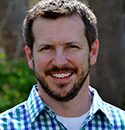We have much more to do and your continued support is needed now more than ever.
Extreme Heat in Summer 2010: A Window on the Future
Could the sweltering summer of 2010 be considered mild compared to the typical summers of the future? It depends on whether America & nations around the world act now to curb our global warming pollution.
That’s the conclusion of a new National Wildlife Federation report, Extreme Heat in Summer 2010: A Window on the Future:
In 2010, New Jersey, Delaware & North Carolina had their hottest June on record, while Rhode Island & Delaware had their hottest July. Sixteen other states had Junes or Julys that ranked in the top-five hottest. That means upward of 70 million Americans experienced extreme heat these two months. Hundreds of daily temperature records were broken across the country.
Not surprisingly, this hot spell has brought many days where the thermometer topped 90°F. Our analysis of large cities in the eastern United States shows that most locations have had about twice as many days with temperatures exceeding 90°F than they typically would by the end of July. For example, Washington, DC , had 39 days
with temperatures in the 90s by July 31, 2010, compared to 18 days for the same period in an average year. If conditions continue to stay warm, or even if we return to more average conditions in August, Washington and several other cities are on track to meet or break records for the total number of days exceeding 90°F in a single year. Cities in the south-central United States are also running hot: many have had about 50 percent more days over 90°F than average.
While the House passed the American Clean Energy & Security Act, obstructionists in the Senate have blocked action on clean energy & climate legislation. What could happen if the deny & delay crowd continues to block pollution limits?
Summers like the current one, or even worse, will become the norm by 2050 if global warming pollution continues to increase unabated. Alternatively, taking steps to reduce emissions can help avoid some of this increase in extremely hot days. For example:
- Washington, DC, is projected to have about 55 days over 90°F by midcentury under a lower-emissions scenario and about 100 such days if emissions are higher. For comparison, the city will likely have about 50 days above 90°F in 2010 if August and September have an average number of very hot days.
- Philadelphia, PA, is projected to have about 40 days over 90°F by midcentury under a lower-emissions scenario and about 60 such days if emissions are higher. Through the end of July, the city had 25 days exceeding 90°F in 2010 and is on track to have about 30 or more such days for the year.
- St. Louis, MO, is projected to have about 60 days over 90°F by midcentury under a lower-emissions scenario and about 80 such days if emissions are higher. This year, the city is on track to have 45 extremely hot days, about 10 more than average.
Read the full report (PDF), then take action. Tell your senators we need comprehensive climate & energy answers now.
Park picture via Flickr’s vasofoto.com
[youtube]http://www.youtube.com/watch?v=hl9WYhYJjqQ[/youtube]























